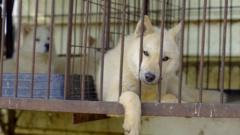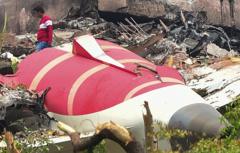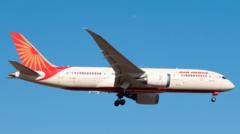A recent investigation reveals that Muan International Airport had been given repeated warnings about bird strikes prior to the tragic crash of Jeju Air Flight 2216 in December, which resulted in the deaths of 179 individuals. Records show meetings focused on the growing number of bird strike incidents and documented failures to implement adequate preventive measures.
Airport Ignored Bird Strike Warnings Before Fatal Jeju Air Incident

Airport Ignored Bird Strike Warnings Before Fatal Jeju Air Incident
Concerns over bird strikes at Muan International Airport highlighted before crash that killed 179 passengers.
Muan International Airport, known for its proximity to significant bird habitats, saw a spike in bird strike warnings a mere ten days before the accident. During a committee meeting, officials discussed the alarming rise in strikes involving incoming aircraft, particularly near coastal areas frequented by birds. An official from a local aviation institute raised concerns regarding the inadequacy of current bird-repellent resources, pointing out insufficient personnel and ineffective noisemakers.
Tragedy struck on December 29 when the pilot of Jeju Air Flight 2216 issued a distress call reporting a bird strike during descent. The plane landed on its belly, skidding down the runway before crashing into a barrier, resulting in a fiery explosion. Only two of the 181 passengers survived.
The aftermath of the crash remains under investigation. While investigators have yet to finalize their findings, initial reports note the discovery of bird remains, specifically feathers and blood traced back to the Baikal teal, a migratory duck endemic to the South Korean winter. Observers express concern that without better preventive strategies, such devastating incidents might recur.
These developments raise significant questions about the adherence to established safety protocols and the readiness of airports to tackle known risks in aviation, presenting a challenge for regulators that could change safety practices in the industry substantially.
As families mourn and investigations continue, the tragedy highlights the crucial need for rigorous monitoring and response strategies to protect air travel from wildlife hazards.
Tragedy struck on December 29 when the pilot of Jeju Air Flight 2216 issued a distress call reporting a bird strike during descent. The plane landed on its belly, skidding down the runway before crashing into a barrier, resulting in a fiery explosion. Only two of the 181 passengers survived.
The aftermath of the crash remains under investigation. While investigators have yet to finalize their findings, initial reports note the discovery of bird remains, specifically feathers and blood traced back to the Baikal teal, a migratory duck endemic to the South Korean winter. Observers express concern that without better preventive strategies, such devastating incidents might recur.
These developments raise significant questions about the adherence to established safety protocols and the readiness of airports to tackle known risks in aviation, presenting a challenge for regulators that could change safety practices in the industry substantially.
As families mourn and investigations continue, the tragedy highlights the crucial need for rigorous monitoring and response strategies to protect air travel from wildlife hazards.























